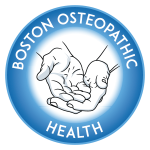Comparison: DOs vs MDs and Chiropractors
Category |
DO |
MD |
DC |
| Undergraduate Training | 4 Year Degree | 4 Year Degree | 90 Hours College Credit (Some require degree) |
| Graduate Training | 4 Year Osteopathic Medical Degree (DO) | 4 Year Medical Degree (MD) | 4 Year Chiropractic Degree (DC) |
| Post-Grad Training | 1 Year Internship 2-8 Years Residency (depending on specialty) |
1 Year Internship 2-8 Years Residency (depending on specialty) |
No Post-grad Training |
| Licensure / Scope of Practice | Fully Licensed to practice the complete spectrum of Medical and Surgical Specialties in all 50 States | Fully Licensed to practice the complete spectrum of Medical and Surgical Specialties in all 50 States | Licensed to practice Chiropractic Manipulation (see below) |
| Prescribe Medications | Yes | Yes | No |
| Manual Medicine Training | Over 500 Hours (see below) | None | Over 500 Hours (see below) |
*Association of Chiropractic Colleges and American Chiropractic Association
Osteopathic Physicians vs. Chiropractors: Scope of Practice
The primary differences between an osteopathic physician and a chiropractor are their levels of training and the scope of their practice. A chiropractor is not a licensed physician and has not completed residency training in a hospital. The scope of chiropractic practice is defined by statute as “including the diagnosing and locating of misaligned or displaced vertebrae and, through manual manipulation and adjustment of the spine and other skeletal structures, treating disorders of the human body. The practice of chiropractic does not include the use of drugs or surgery, or the practice of osteopathy, obstetrics, or any other branch of medicine”.
Osteopathic Physicians vs. Chiropractors: Techniques
Chiropractic is primarily concerned with normalizing the alignment of the spine to influence the relationship between the spinal column and the nervous system. In this way, the chiropractor endeavors to influence the physiologic function of all of the organs and systems within the body. Although their techniques have expanded somewhat in recent years to include more gentle techniques, the vast majority of chiropractic adjustments are still of the thrust variety.
Osteopathic Manipulative Medicine is based upon the principle that the human body possesses self healing/self regulating mechanisms that are the source of true healing. The osteopath is trained to discover the treatment plan that these forces have already designed, in that moment, specifically for that patient. The focus in treatment, therefore, goes beyond simple spinal alignment, to dealing directly with the abnormal body physiology using a array of direct and indirect techniques. This more holistic healthcare perspective, affords the osteopath a broader spectrum of therapeutic options in addition to thrust techniques, among which are myofascial release, muscle energy, counterstrain, visceral manipulation, osteopathy in the cranial field, and biodynamics.
This broader range of diagnostic and therapeutic options, allows the osteopathic physician to custom fit their treatment plan to the patient’s unique needs, respecting the fact that each of us is not necessarily meant to look and function the same way. This also means that the osteopath does not prescribe months or years of treatment at the first visit, but lets the prescription unfold as the treatment process proceeds.
Conditions commonly treated with OMT include:

Dental
Orthodontic Problems, TemporoMandibular Joint Syndrome, Malocclusion, Advanced Lightwire Functional Appliance (ALF) dental appliance combination treatment

Digestive
Constipation, Irritable Bowel Syndrome, Nausea, Diarrhea, Inflammatory Bowel Disease

Ear, Nose, and Throat
Chronic Ear Infections, Chronic Tonsillitis, Sinusitis, Throat Pain, Tinnitus

Genetic
Congenital Malformations, Down Syndrome

Genitourinary
Bedwetting, Prostatitis, Urinary Incontinence

Neurological
Dizziness and Vertigo, Head Trauma, Migraine Headaches, Post Concussion Syndrome, Post-MVA Inertial Injury [Whiplash], Seizures, Visual Disturbances, Dementia, Parkinsons Disease

Orthopedic
Kyphosis, Lordosis, Postural Imbalances, Scoliosis

Pediatric
ADD, ADHD, Autism, Behavioral Problems, Cerebral Palsy, Colic, Developmental Delays, Failure to Thrive, Learning Disorders, Otitis Media [ear infections], Plagiocephaly [misshaped head], Spitting Up, Strabismus [Crossed-Eyes or Lazy Eye], Sucking Difficulties

Pregnancy
Back Pain, Groin Pain, Varicose Veins, Prevention of Labor Problems

Psychiatric
Anxiety, Depression, Post Traumatic Stress Disorder, Sleep Disturbances

Respiratory
Allergies, Asthma, Bronchitis, Frequent Colds, Recurrent Sore Throats

Somatic
Osteoarthritis, Fibromyalgia, Joint or Muscular Pain

Complex Conditions
Multiple Chemical Sensitivity, Chronic Tick-borne Illnesses, Complex Regional Pain Syndrome (Reflex Sympathetic Dystrophy), Mast Cell Activation Disorders, Autoimmune Illness
